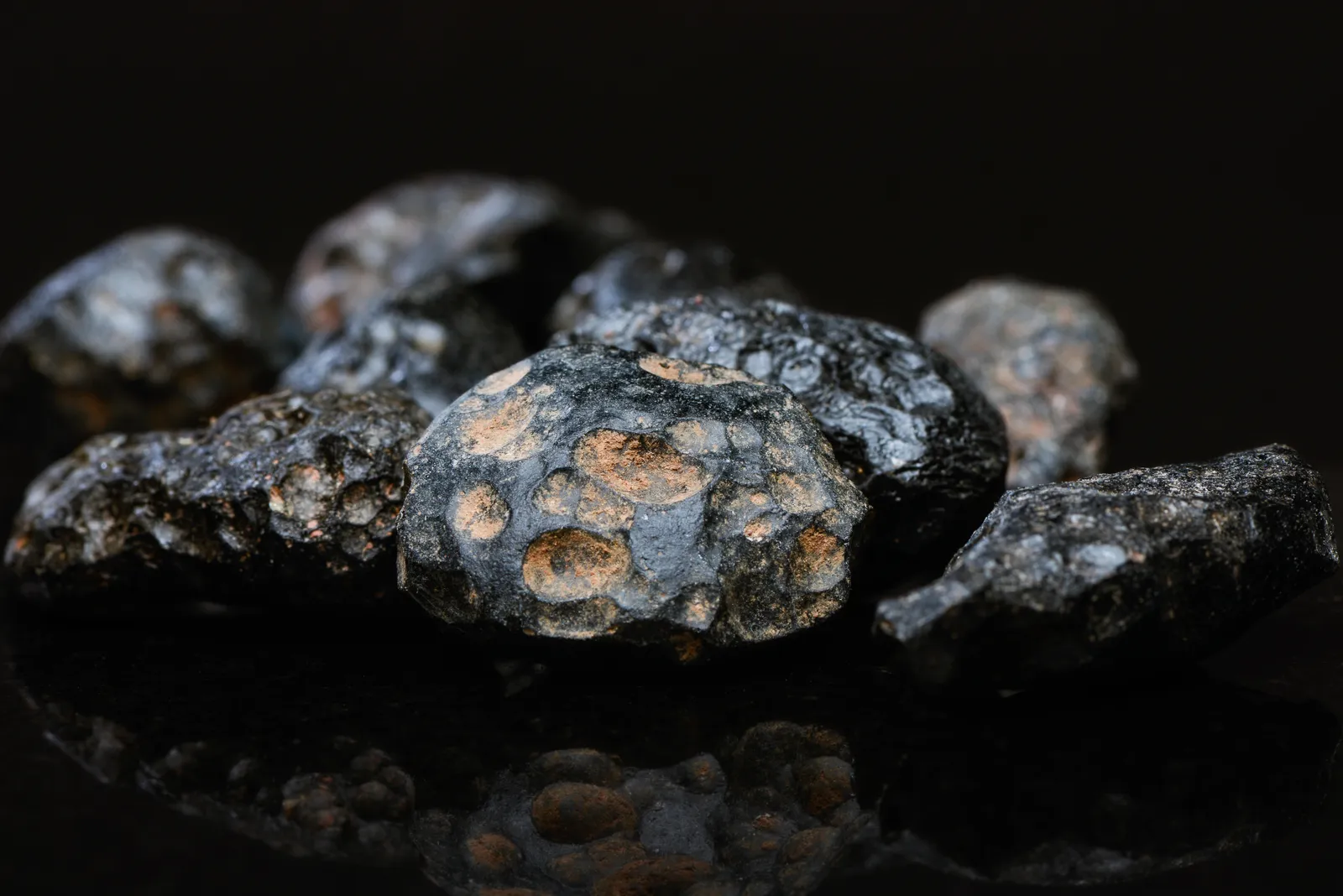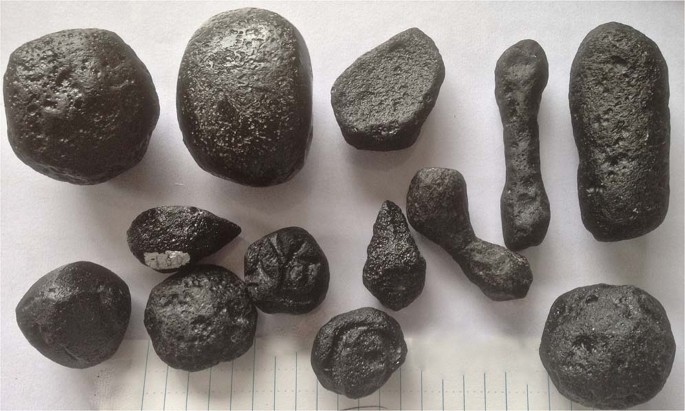Tektites are small, glassy objects that form from terrestrial debris during meteorite impacts.
Understanding the unique metamorphic environment that creates tektites reveals details about our solar system’s violent past.
This article explores how tektites like those found in Australia and Asia shed light on ancient meteorite collisions.
What Metamorphic Environment Produces Tektites?

Tektites form from terrestrial debris ejected during the extreme shock metamorphism caused by hypervelocity meteorite impacts on Earth.
The unique conditions of pressure, temperature, and plasma generation created during such extraterrestrial collisions are required to produce tektites.
Key Points
- Tektites form exclusively during meteorite impacts that generate enormous shock pressures >10 GPa and temperatures >1700°C.
- They originate from upper continental crust sedimentary rocks like quartzite, shale, and limestone.
- Tektites provide evidence of ancient impacts even when no crater remains preserved.
What Are Tektites?
Tektites are small objects typically ranging in size from millimeters to centimeters composed of natural glass formed from terrestrial debris ejected during meteorite impacts on Earth.
They display distinctive sculpted, aerodynamic shapes from having melted and streamed through the air during an impact event.
Tektites are compositionally identical to earthly sedimentary and igneous rocks and sediment.
They are rich in silica relative to terrestrial volcanic glasses.
Where Are Tektites Found on Earth?
Tektites are only found in a few areas called strewn fields.
The largest strewn fields are associated with the Zhamanshin crater in Kazakhstan and the Aouelloul crater in Mauritania.
Additional tektite locations include Georgia, Texas, and four strewn fields in Indochina associated with the barely preserved Xuan Loc crater site in Vietnam.
Australian tektites called australites represent the largest known strewn field.
How Does the Impact Process Form Tektites?

During hypervelocity meteorite impacts, rocks and sediment get crushed, melted, and ejected at high pressures and temperatures.
Vaporized terrestrial debris condenses into tektite glass droplets that acquire aerodynamic shapes from traveling through the air before landing in concentrated areas.
Tektites exhibit features like layered structure, flow lines, schlieren, inclusions, and the presence of lechatelierite indicative of formation in impact-generated plasma.
What Is the Parent Rock of Tektites?
The parent rock or protolith that tektites form from is the raw starting material melted during an impact event.
Tektites likely originate from sandstone, shale, limestone, or soil sediment present at an impact site.
For example, analysis of australites indicates they derive from a mix of sedimentary rock types including quartzite, shale, marl, and limestone.
Determining the protolith is important for connecting tektites to source craters.
How Do Tektites Get Their Shape?
The characteristic sculpted, aerodynamic shape of tektites results from melting, streaming through the air, and spinning during flight after getting ejected from an impact crater.
Their shape resembles an aerofoil with a rounded nose and tapering rear.
Flow lines, schlieren, layering, and inclusions parallel to the surface also attest to tektites’ origin as rotating molten droplets that solidified in flight.
What Conditions Are Needed to Form Tektites?
The formation of tektites requires extreme temperatures >1700°C and high pressures > 10 GPa.
These conditions only occur during hypervelocity meteorite impacts that vaporize and melt target rocks.
The presence of tektites definitively indicates a meteorite impact occurred even when no crater remains preserved.
Not all impacts produce tektites due to the exact combination of projectile composition, impact angle, and parent rock needed.
How Do Tektites Differ From Impact Glasses?
While similar, tektites are different from impact glasses like Darwin glass which forms from melting and quenching rock without getting ejected from a crater.
Tektites have lower water content and show more evidence of rotating flow.
Their composition more closely matches target sedimentary rocks rather than bedrock.
Impact glasses lack the marks of aerodynamic shaping seen in tektites.
Can Tektites Reveal the Location of Ancient Impacts?
Yes, tektites are useful for locating source craters from ancient impacts.
Their strewn fields extend downrange of crater sites indicating directionality.
High-precision chemical analysis can fingerprint the composition of tektites back to their exact parent rocks at suspected source crater locations.
For example, the analysis matched australites with sedimentary rocks in southern Cambodia, connecting them with the Xuan Loc impact site.
How Do Tektites Form from Igneous rocks?
Some tektites like moldavites show a closer chemical affinity to igneous rather than sedimentary protoliths.
In these cases, the high temperatures of the impact melt underlying igneous bedrock, incorporating it into ejected debris that produces tektites.
However, even in these instances, sediment gets mixed in, so tektites always contain some sedimentary components.
What Type of Rock Do Tektites Originate From?
Tektites are generally similar in composition to quartz-rich terrestrial sedimentary rocks and unconsolidated quartz-rich sediments.
The most common protoliths are silica-rich rocks like quartzite, graywacke, shale, marl, and limestone.
Tektites likely sample the uppermost sedimentary veneer at impact sites rather than deeper bedrock.
Some tektites like bediasites and georgiaites may sample local unconsolidated sediments.
Why Are Tektites Associated with Sedimentary Rocks?
Sedimentary protolith affinity makes sense given tektites originate from material melted and ejected from impact craters.
Impacts sample the near-surface sedimentary environment rather than excavating deeper bedrock.
Tektites compositionally resemble the average upper continental crust.
The collisional process incorporates and melts rocks broadly representative of the sedimentary record at an impact site.
How Do Tektites Form in The Environment?
The environment of tektite formation consists of sedimentary source rocks, hypervelocity extraterrestrial impact, enormous release of energy, and generation of a silica-rich impact plume.
Tektites acquire their morphology and texture while airborne as spinning droplets of impact melt.
Their strewn field results from the expanding vapor plume interacting with the atmosphere and planetary rotation.
Tektites provide unique evidence and insights into ancient impact events on Earth.
What Type of Metamorphism Can Produce Tektites?
Tektites are exclusively produced by shock metamorphism, which refers to changes in rocks and minerals due to extreme pressures and temperatures during hypervelocity meteorite impacts.
Shock metamorphism generates unique high-pressure polymorphs of quartz, feldspar, and other minerals not formed during regional or contact metamorphism.
Shock metamorphism also creates distinctive microscopic planar deformation features, dialectic glass, and shatter cones.
The enormous pressures of over 10 GPa and temperatures in excess of 1,700°C required to create tektites only occur during extraterrestrial impacts on Earth.
No other metamorphic environment generates the characteristic features seen in tektites and associated rocks affected by meteorite impacts.
What Are Some Environments in Which Metamorphic Rocks Form?
Metamorphic rocks form through mineralogical, textural, and chemical changes in preexisting rocks in response to increased temperatures and pressures.
The various environments where metamorphic rocks originate include regional metamorphism through mountain building, contact metamorphism around igneous intrusions, and shock metamorphism from meteorite impacts.
Regional metamorphism occurs with the large-scale pressures created when tectonic plates collide and thrust sedimentary and igneous rocks to great depths.
Contact metamorphism happens due to hot igneous intrusions baking surrounding country rock.
Shock metamorphism results from ultra-high pressures during extraterrestrial impacts.
Metamorphic rocks also form through dynamic metamorphism from tectonic shearing and Low-grade metamorphism begins at depths of just a few kilometers.
Which Metamorphic Environment Produces the Most Metamorphic Rock?
Regional metamorphism generates over 90% of all metamorphic rocks on Earth.
The enormous pressures from continental collisions during mountain building create extensive metamorphic belts containing slates, schists, gneisses, and other high-grade metamorphic rocks.
Contact metamorphism around igneous intrusions converts smaller volumes of country rock, forming spotted marbles and hornfelses.
Shock metamorphism only affects rocks instantaneously during hypervelocity impacts.
While intensely metamorphosing target rocks, impacts produce limited volumes of distinctive metamorphic rocks like shatter cones on a global scale compared to regional metamorphism.
What is the Environment of Metamorphism?
The environment of metamorphism refers to the physical and chemical conditions that alter existing rocks.
The factors include increased temperatures, pressures, fluid composition, strain rates, and tectonic regimes.
Regional metamorphic environments involve large-scale pressures from continental collisions.
Contact metamorphic environments occur adjacent to magmatic heat sources.
Shock metamorphic environments result from sudden ultra-high pressures and temperatures during extraterrestrial impacts.
Understanding metamorphic environments provides insights into the temperature, pressure, burial depth, and tectonic history rocks underwent.
Quantitative thermobarometry helps reconstruct the precise physical conditions of past metamorphic events.
Metamorphic mineral assemblages act as indicators of the pressure, temperature, and chemical environment prevailing during metamorphism.
Key Takeaways:
- Tektites originate in the extraordinary metamorphic environment produced by meteorite impacts on Earth. Understanding tektites like australites provides details about the catastrophic extraterrestrial collisions that shaped our planet’s surface and history. Tektites remain an invaluable tool for reconstructing ancient impact events even when all surface traces of the crater have eroded away.
Frequently Asked Questions
What Does Shock Metamorphism Mean?
Shock metamorphism refers to changes in rocks and minerals resulting from extreme pressures during meteorite impacts. It produces features like shatter cones, planar deformation features, high-pressure polymorphs, and tektites.
What Are Planar Deformation Features?
Planar deformation features are microscopic lamellae or planes of glassy material in quartz and feldspar only produced by shock pressures >10-35 GPa during meteorite impacts.
How Are Tektites Different From Volcanic Glasses?
While superficially similar, tektites are compositionally different from volcanic glasses, containing more silica. They also display evidence of formation as rotating liquids rather than volcanic eruptions.
What Is A Shatter Cone?
Shatter cones are distinctive striated fracture surfaces in rock only formed by shock pressures of 2-30 GPa during meteorite impacts. They resemble horseshoe shapes propagating away from an impact center.
Can Tektites Reveal Unidentified Impact Sites?
Yes, geochemical analysis and strewn field patterns of tektites can pinpoint ancient source impact craters not previously recognized. Tektites are clues to discovering Earth’s missing impact record.
GreenChiCafe is passionate about our natural world and preserving Earth’s history.
Check out our website for more content about tektites, meteorite impacts, and the story hidden in rocks.
